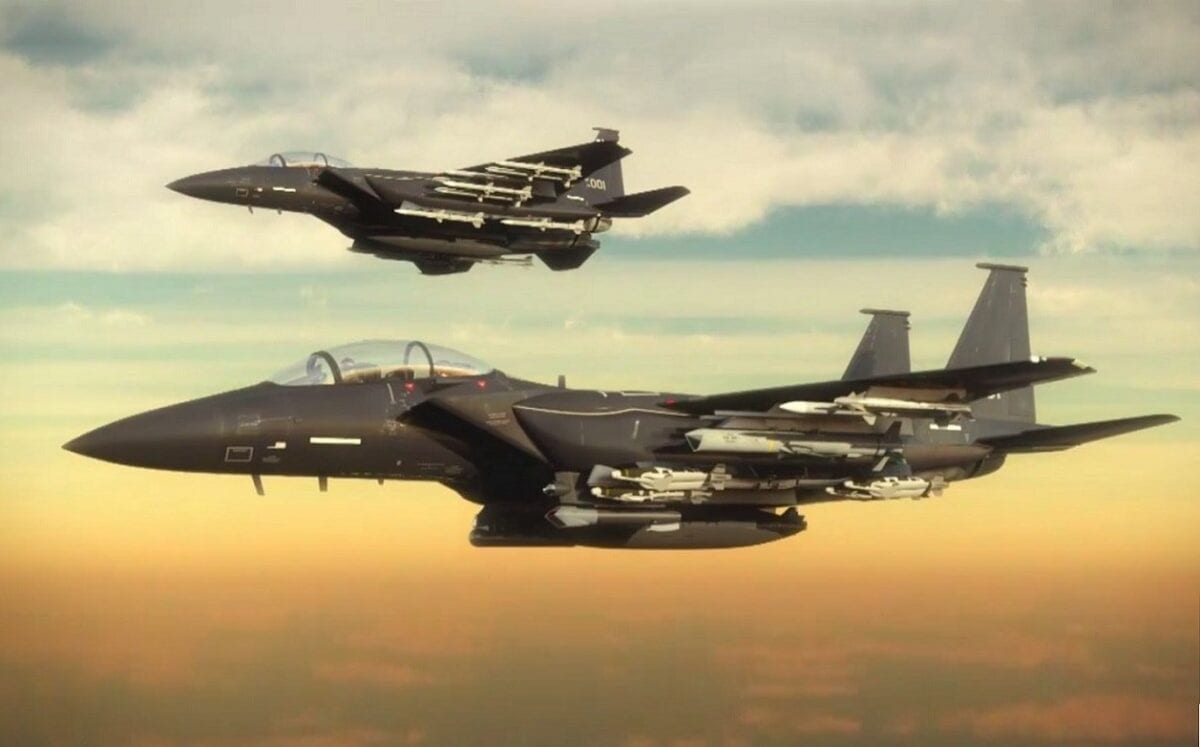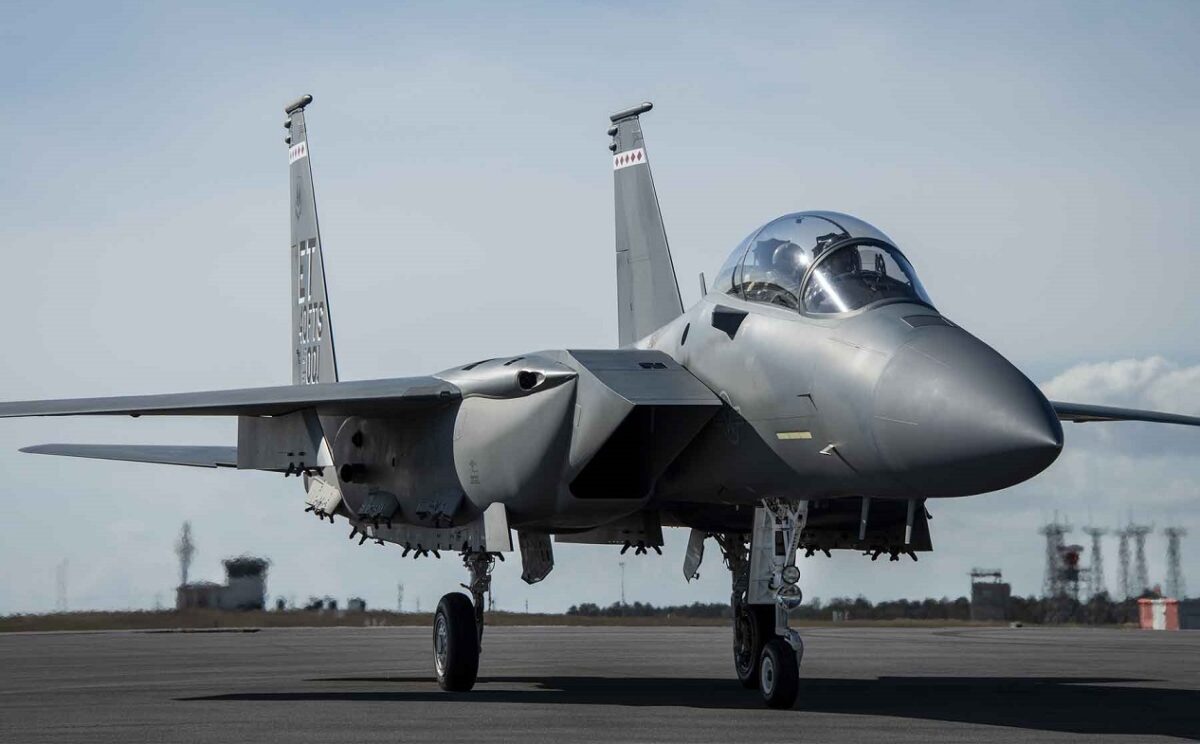Fifty years ago, the first F-15 variant debuted. Designed with “not a pound for air-to-ground,” the F-15 was a preeminent fourth-generation air-to-air fighter. While the original variants were specifically suited for an air superiority role, an F-15E “Strike Eagle,” capable of performing air-to-ground missions, was released in 1988. The E-variant was a capable air-to-air fighter, yet had a more diversified mission profile, which included the ability to conduct ground strikes. Today, a new variant, the F-15EX is “ready-now” according to Boeing.
Upgrading the Fighter
The F-15EX made its first flight in February 2021. A month later, the US Air Force accepted delivery of its first F-15EX – which marked the first USAF F-15 delivery in 17 years. The F-15EX was developed quietly, after the USAF inquired discreetly with Boeing about developing a new airframe with a few specific requirements: cheap to operate, cheap to acquire, low-risk, and non-disruptive to F-35 procurement. Boeing’s solution was an update to the classic F-15 airframe, then in its fourth decade of service – a somewhat bold decision given that the USAF had not procured any fourth-generation fighters since 2001. The result of Boeing’s efforts was the F-15EX.
Unlike the fifth-generation airframes that now dominate USAF procurement, the F-15EX does not have stealth capabilities. The plane has the same observability characteristics as previous F-15 variants, meaning Boeing’s new airframe will pop up on enemy radar. The F-15EX does have myriad improvements, however, as The War Zone reported when the program was first discovered: “Configuration is impressive as it includes a flat-panel glass cockpit, JHMCS II helmet mounted display (HMD), revised internal wing structure, fly-by-wire controls, APG-82 AESA radar, activation of outer wing stations one and nine, advanced mission computer, low-profile heads-up display, updated radio and satellite communications, the highly advanced Eagle Passive Active Warning Survivability System (EPAWSS) electronic warfare and electronic surveillance suite, Legion Pod-mounted infrared search and track system (IRST) and the list goes on.”
The F-15EX can be armed to the teeth. Featuring AMBER missile carrying racks, the plane can handle 22 air-to-air missiles for air superiority missions. For hybrid missions, the plane can handle eight air-to-air missiles along with either 28 Small Diameter Bombs (SDBs) or seven 2,000-pound bombs.

F-15EX. Image Credit: Boeing.

F-15EX. Image Credit: Boeing.
Remarkably, the F-15EX has a 20,000-hour service life. By comparison, the new Block III F-18 Super Hornet has a 10,000-hour service life (which is a huge improvement over the Block II 6,000 hours). With such a lengthy service life, the F-15EX has the potential to be a USAF staple for several decades. Yet, the question is now suddenly whether the USAF wants the bird at all.
Reversing Orders?
Rumors are swirling that the USAF is weighing options to cancel the F-15EX. Critics, advocating that the F-15EX be canceled, are rating the plane as a too-expensive, outdated piece of equipment. Defense One’s John Venable argues that the F-15EX won’t be able to operate against modern surface-to-air weapons, which will limit the fighters to stateside defense, where the fighter’s 22 air-to-air missiles are an excessive overkill.
Detractors seem to be making headway. The budget request for Fiscal Year 2023, sets aside funds for 80 EX-variants – a downturn from the originally planned 144. Initially, the plan was for the F-15EX to replace the entire F-15C/D fleet. But the current budget request would mean the last F-15EX delivery would occur next year. Nothing is certain yet. The Air Force is considering how to balance their force structure with respect to the stealthy, jack-of-all-trades, F-35, aging fourth-generation workhorses, and the updated F-15. Nothing has been decided yet. Stay tuned.
Harrison Kass is a Senior Defense Editor at 19FortyFive. An attorney, pilot, guitarist, and minor pro hockey player, he joined the US Air Force as a Pilot Trainee but was medically discharged. Harrison has degrees from Lake Forest College, the University of Oregon School of Law, and New York University’s Graduate School of Arts & Science. He lives in Oregon and regularly listens to Dokken.

